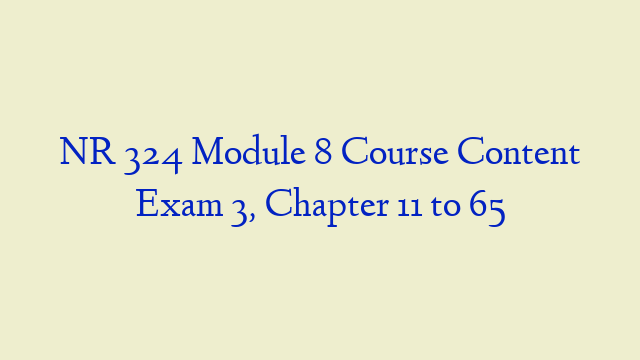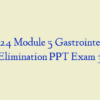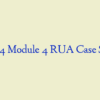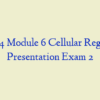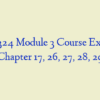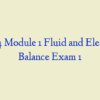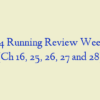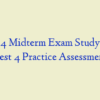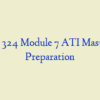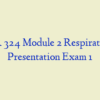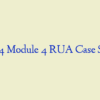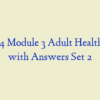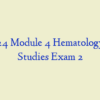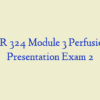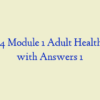Description
NR 324 Module 8 Course Content Exam 3 (On Module 5 -7) – Chapter 11, 14, 15, 39, 42, 43, 62, 63, 64 and 65 (20 Pages Question and Answers)
Infection and Human Immunodeficiency Virus Infection:
- Clinical ManifestationsTransmission of HIV virus and factors that affect transmission.
Altered Immune Responses
- Describe the functions and components of the immune system.
- Compare and contrast humoral and cell-mediated immunity, including lymphocytes involved, types of reactions, and effects on antigens.
- Differentiate among the four types of hypersensitivity reactions in terms of immunologic mechanisms and resulting alterations.
- Describe the etiologic factors, clinical manifestations, and treatment modalities of autoimmune diseases.
- Identify the clinical manifestations and emergency management of a systemic anaphylactic reaction.
- Describe the assessment and collaborative care of a patient with chronic allergies.
- Describe the etiologic factors and categories of immunodeficiency disorders.
- Identify the types and side effects of immunosuppressive therapy.
Gastrointestinal System
- Select significant subjective and objective assessment data related to the gastrointestinal system that should be obtained from a patient.
- Identify the appropriate techniques used in the physical assessment of the gastrointestinal system.
- Differentiate normal from abnormal findings of a physical assessment of the gastrointestinal system.
- Describe the etiology, complications, collaborative care, and nursing management of nausea and vomiting.
- Explain the types, pathophysiology, clinical manifestations, complications, and collaborative care (including surgical therapy and nursing management) of gastroesophageal reflux disease (GERD) and hiatal hernia.
- Describe the pathophysiology, clinical manifestations, complications, and collaborative care of esophageal cancer, diverticula, achalasia, and esophageal strictures.
- Differentiate between acute and chronic gastritis, including the etiology, pathophysiology, collaborative care, and nursing management.
- Compare and contrast gastric and duodenal ulcers, including the etiology, pathophysiology, clinical manifestations, complications, collaborative care, and nursing management.
- Describe the clinical manifestations, collaborative care, and nursing management of stomach cancer.
- Explain the common etiologies, clinical manifestations, collaborative care, and nursing management of upper gastrointestinal bleeding.
- Identify common types of foodborne illnesses and nursing responsibilities related to food poisoning. nr 324 module 8
- Explain the common etiologies, collaborative care, and nursing management of diarrhea, fecal incontinence, and constipation.
- Describe the collaborative care and nursing management of acute appendicitis, peritonitis, and gastroenteritis.
- Compare and contrast the inflammatory bowel diseases of ulcerative colitis and Crohn’s disease, including pathophysiology, clinical manifestations, complications, collaborative care, and nursing management.
- Differentiate among mechanical and non-mechanical bowel obstructions, including causes, collaborative care, and nursing management.
- Differentiate between diverticulosis and diverticulitis, including clinical manifestations, collaborative care, and nursing management.
- Compare and contrast the types of hernias, including etiology and surgical and nursing management.
- Describe the types of malabsorption syndromes and collaborative care of celiac disease, lactase deficiency, and short bowel syndrome.
Musculoskeletal System
- Select significant subjective and objective data related to the musculoskeletal system that should be obtained from a patient.
- Select appropriate techniques to use in the physical assessment of the musculoskeletal system.
- Differentiate normal from abnormal findings of a physical assessment of the musculoskeletal system.
- Differentiate among the etiology, pathophysiology, clinical manifestations, and collaborative care of soft tissue injuries, including strains and sprains.
- Common from abnormal stretching or twisting that happen in vigorous actives; happen around joints & spinal muscles; usually self-limiting w/ full function returning w/in 3-6 weeks; x-rays rule out fracture; hemarthrosis (bleeding into joint space or cavity) or disruption of synovial lining can happen at any time of injury;
- Relate the sequential events involved in fracture healing.
- Compare closed reduction, cast immobilization, open reduction, and traction in terms of purpose, complications, and nursing management
- Evaluate the neurovascular assessment of an injured extremity.
- Explain common complications associated with a fracture and fracture healing. nr 324 module 8
- Describe the types of joint replacement surgery for arthritis and connective tissue disorders.
- Prioritize the preoperative and postoperative management of the patient having joint replacement surgery.
- Describe the etiology, pathophysiology, clinical manifestations, and collaborative and nursing management of osteomalacia, osteoporosis, and Paget’s disease.

